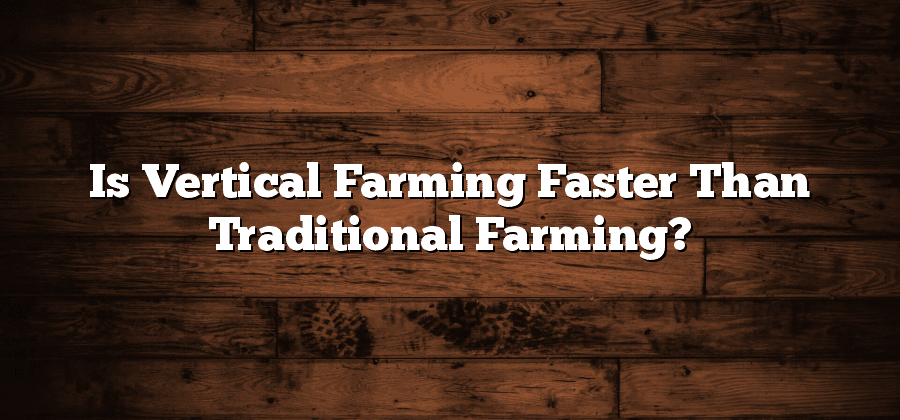Advantages of Vertical Farming over Traditional Farming
Vertical farming has gained much attention in recent years due to its numerous advantages over traditional farming methods. One major advantage is the ability to grow crops year-round, independent of seasonal changes. In traditional farming, weather conditions and seasonal changes greatly impact crop growth, leading to fluctuations in supply and pricing. However, in a vertical farming system, controlled environments can be established, allowing for constant and uninterrupted crop production regardless of external factors. This not only ensures a consistent supply of fresh produce but also helps stabilize market prices.
Another significant advantage of vertical farming is its ability to maximize land use efficiency. Traditional farming requires large tracts of land, which are often limited and scarce. Vertical farming, on the other hand, utilizes vertical space by stacking plants in layers or using multi-level structures, thereby increasing the crop density per square meter. This means that a vertical farm can produce a higher yield per unit area compared to traditional farming methods. Additionally, vertical farming can be implemented in urban areas, where the availability of land for agriculture is limited. By utilizing vertical space and engaging in urban farming, communities can have access to locally grown, fresh produce without the need for extensive land usage.
Vertical Farming Techniques and Innovations
Vertical farming, also known as indoor farming, is an innovative agricultural technique that has gained popularity in recent years. This method involves growing crops in vertically stacked layers, using artificial lighting and controlled environmental conditions. One major technique used in vertical farming is hydroponics, where plants are grown in a nutrient-rich water solution instead of traditional soil. This technique allows for more efficient use of water and nutrients, reducing the overall environmental impact of farming. Additionally, vertical farming often incorporates advanced automation and computerized systems, allowing for precise control over factors such as temperature, humidity, and lighting, leading to increased productivity and crop yields.
Innovation plays a crucial role in the success of vertical farming systems. One of the key innovations in this field is the development of advanced LED lighting systems. These lights not only provide the necessary spectrum for plant growth but also have the ability to adjust intensity and duration, mimicking natural sunlight patterns. This breakthrough has resulted in significant energy savings and improved crop growth rates. Furthermore, vertical farming techniques have evolved to include vertical aeroponics, a method in which plant roots are suspended in a misted nutrient solution. This technique further optimizes the use of space and resources, allowing for increased crop density and higher production volumes. The constant drive for innovation in vertical farming is paving the way for a more sustainable and efficient approach to agriculture.
Efficiency and Productivity in Vertical Farming
Vertical farming offers several advantages in terms of efficiency and productivity. With the ability to utilize vertical space, these farms can produce significantly more crops compared to traditional farming methods. By stacking multiple layers of plant beds, vertical farms maximize the use of limited space, resulting in a higher yield per square foot. Additionally, the controlled environment within vertical farms allows for year-round production, further increasing productivity compared to seasonal limitations in traditional agriculture.
Moreover, vertical farming techniques provide precise control over environmental factors, such as temperature, humidity, and lighting. By carefully adjusting these variables, farmers can create an optimal growing environment for specific crops, leading to faster growth and shorter cultivation cycles. This level of control also reduces the risk of crop failure due to external factors like adverse weather conditions or pests. Furthermore, vertical farming systems often employ advanced technologies, such as hydroponics or aeroponics, which optimize nutrient delivery to plants, resulting in healthier and more vigorous growth. Overall, the efficiency and productivity of vertical farming make it a promising solution to meet the growing demand for food while minimizing resource consumption.
Environmental Impact of Vertical Farming
One of the key advantages of vertical farming is its positive environmental impact. By utilizing vertical space and growing crops in stacked layers, vertical farms are able to produce significantly higher yields compared to traditional farms. This efficient use of space helps to conserve valuable land resources and reduces the need for deforestation and habitat destruction.
Additionally, vertical farming systems can greatly reduce water usage and waste. Through the use of hydroponic or aeroponic techniques, plants are grown in nutrient-rich solutions instead of soil. This not only eliminates the need for excessive water usage typically associated with traditional farming, but also minimizes the risk of soil erosion and nutrient runoff into nearby water sources. As a result, vertical farming helps to preserve water quality and mitigate the negative impacts of conventional agriculture on the environment.
Challenges Faced by Vertical Farming Systems
Without controlled, natural sunlight, vertical farming systems rely heavily on artificial lighting systems, which can be a significant operational challenge. The design and implementation of efficient and cost-effective lighting systems that provide the necessary light intensity and spectrum for optimal plant growth can be demanding. Additionally, these lighting systems consume a significant amount of electricity, driving up operational costs and posing challenges in terms of sustainability and energy efficiency.
Another key challenge faced by vertical farming systems is the management of water and nutrient cycles. Vertical farms typically use hydroponic or aeroponic systems, where plants are grown in nutrient-rich solutions or misted with nutrient-enriched water. Ensuring a proper balance of nutrients, pH levels, and water quality requires constant monitoring and adjustment. Any imbalances or fluctuations can lead to crop failures and affect overall productivity. Furthermore, the efficient use of water is vital to minimize waste and conserve resources, which adds another layer of complexity to the management of vertical farming systems.






